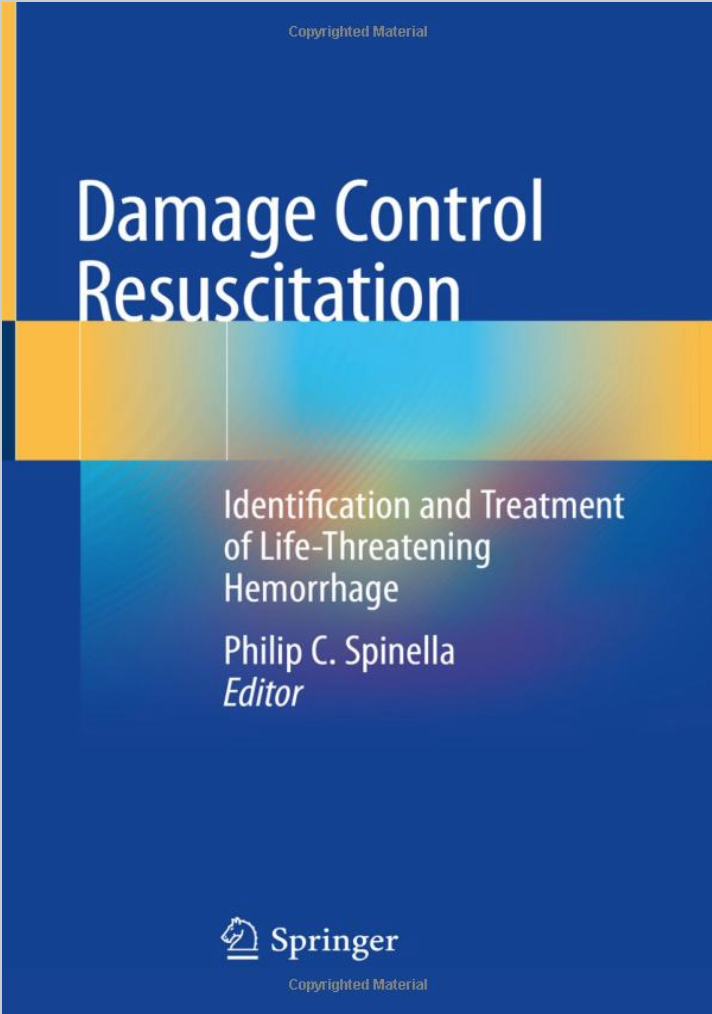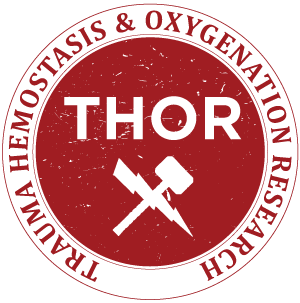 A new DCR textbook is now available with deep roots in the THOR Network.
A new DCR textbook is now available with deep roots in the THOR Network.
Damage Control Resuscitation: Identification and Treatment of Life-Threatening Hemorrhage
Editor: Spinella, Philip C. (Ed.)
This book provides a comprehensive overview of damage control resuscitation (DCR), an evidence-based approach to the resuscitation of patients with severe life-threatening hemorrhage (LTH). It focuses on both civilian and military applications as DCR is utilized in civilian trauma situations as well as combat casualty care settings.
The book covers the history of fluid resuscitation for bleeding, epidemiology of severe traumatic injuries, prediction of life-threatening hemorrhage, pathophysiology and diagnosis of blood failure, and permissive hypotension. Chapters provide in-depth detail on hemostatic resuscitation principles, dried plasma, dried platelet surrogates, and recent developments in frozen red blood cells and oxygen carriers. The book also discusses how DCR principles can be used in a variety of situations such as when there are large numbers of patients with hemorrhagic lesions, non-trauma scenarios, and on distinct populations such as children. Finally, it concludes with a discussion of training and education methods for the implementation of DCR and remote DCR principles as well as learning healthcare system principles to facilitate the implementation of DCR and ultimately improve outcomes for patients with life-threatening hemorrhage.
Damage Control Resuscitation: Identification and Treatment of Life-Threatening Hemorrhage is an essential resource for physicians and related professionals, residents, nurses and medical students in emergency medicine, anesthesia, surgery, and critical care, as well as civilian and military EMS providers.
PURCHASE YOUR COPY TODAY
Purchase (US): Barnes & Noble (hardcover) | Springer (hardcover/ebook) | Amazon (ebook)
Purchase (Europe): Springer (hardcover/ebook)
- Addresses the resuscitation of patients with life-threatening hemorrhage in prehospital settings
- Focuses on both civilian and military applications of DCR
- Utilizes implementation science and learning healthcare system concepts to provide a scientific framework for education and training
- Discusses non-trauma conditions such as obstetric bleeding and spontaneous intracranial bleeding
Chapters include:
-
The History of Fluid Resuscitation for Bleeding
-
Epidemiology of Prehospital and Hospital Traumatic Deaths from Life-Threatening Hemorrhage
-
Blood Failure: Pathophysiology and Diagnosis
-
Prediction of Life-Threatening Hemorrhage
-
Remote Damage Control Resuscitation
-
Permissive Hypotension
-
Hemostatic Resuscitation
-
Dried Plasma
-
Platelets: Frozen and Freeze-Dried Current Products in Development and Regulatory Licensing Challenges
-
Frozen Red Blood Cells
-
Oxygen Carriers
-
Intravenous Haemostatic Adjuncts
-
Colloids and Crystalloids
-
Airway Management of Patients with Life Threatening Haemorrhage: Principles of Safe and Effective Care
-
Damage Control Resuscitation for Severe Traumatic Brain Injury
-
Emergency Preparedness Aspects of DCR for Civilian Mass Casualty Scenarios
-
DCR for Non-trauma Patients
-
Optimal Methods of Teaching and Training DCR/RDCR
-
Learning Healthcare System Principles to Facilitate Spread of DCR
